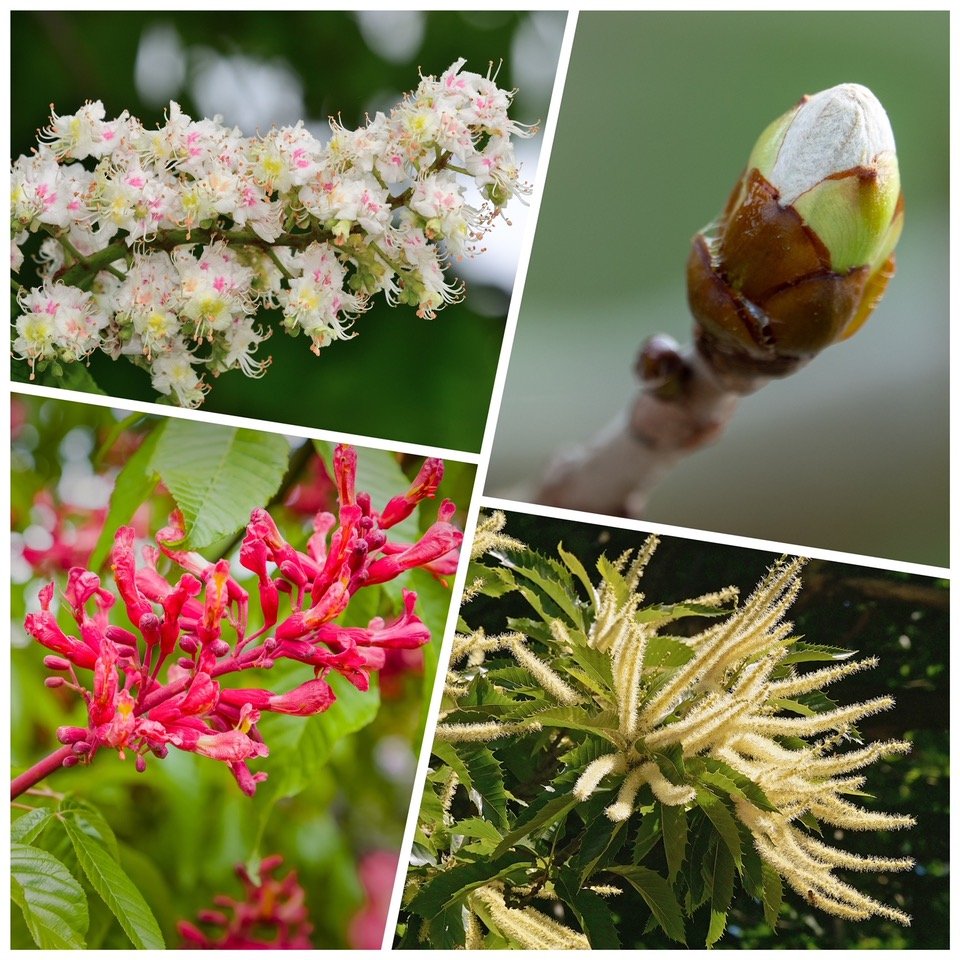Chestnut Flower Energy: Mind Over Matter
White Chestnut – Aesculus hippocastanum
Chestnut Bud – Aesculus hippocastanum
Red Chestnut – Aesculus carnea
Sweet Chestnut – Castanea sativa
Most of us can relate to challenges of the mind, whether the trouble is too many thoughts, or too little focus, we feel ill at ease when our thinking faculties are out of balance. When I reflect on the indications for each Bach Chestnut flower remedy, I recognize the unique ways in which they work to transform challenging thought patterns.
Three of the remedies are made from the Aesculus tree, and are the only ones in the Bach system, that come from a shared order.
White Chestnut and Chestnut Bud are both Aesculus hippocastanum, commonly known as “horse chestnut” or “buckeye.” The tree grows easily throughout North America and Europe, about 75-feet tall on average, and produces large, fragrant white blossoms in early spring.
White Chestnut
White Chestnut is one of the most popular of all the Bach remedies, used for an over-active mind that can’t seem to turn off. Replaying past conversations, and mulling over the day’s events at night, are clear indications for needing this flower. The transformation is a calm and peaceful mind, free from over-thinking and worry.
Chestnut Bud
Chestnut Bud remedy is made from the same flowering tree, but created while the flower is in bud, just before blooming. The remedy is used for a mind that is stuck in habitual patterns and can’t seem to retain information or learn from mistakes; there’s a feeling of distraction when studying for exams or working on projects that require attention to detail. The transformation is that of heightened wisdom and clarity of knowledge.
Red Chestnut
The Red Chestnut tree, also an Aesculus, is a mystery to horticulturists who aren’t sure where the species “carnea” emerged from. They assume it’s a hybrid between Aesculus hippocastanum and a different red species, Aesculus pavia. The challenge this flower correlates to is that of worry for the safety of loved ones. Mental activity that focuses on the many possibilities of harm that our children, partner, or friends, might befall. The transformation is a serene mind, with trust in the well-being and safety of our loved ones. Metaphysically speaking, the color red signifies security and grounding.
Sweet Chestnut
Although there’s a fourth “Chestnut” flower in the system, Sweet Chestnut, Castanea sativa, is part of the Fagaceae family; not one of the Aesculus clan. Yet, I find that it too balances challenging aspects of the mind. Unresolved grief is the keynote of this flower when the mind is entrenched in deep sorrow. We hold onto our pain and loss, as the grief stays stuck in mental processing. The transformation is the ability to fully mourn, embrace acceptance, find inner-peace, and move forward with life.
Take a moment to sit quietly and connect with your breath. Close your eyes and feel the place in your mind that is safe and calm. From this space, reflect on your thought patterns. Do you experience intrusive, uncontrollable thoughts? Is it difficult for you to concentrate on the task at hand? Do you constantly worry about the safety of your family and friends? Is your mind overburdened with grief? Perhaps you’ve felt each of these challenges, at one time or another, but try to recognize what feels most up, right now, in this moment.
Each Chestnut remedy can be used to support inner-strength and peace of mind, in its own way. When you notice your active, or absent, mind, you can attune to what is calling to be heard and respond with deeper self-awareness. Oftentimes, you can simply connect with the energy of a flower remedy with an understanding of how the challenge emerges within, and you can choose to create a different response, in the moment. In this way, the flowers lend their support by working to energetically shift your mindset, which is the springboard to deeper healing.

